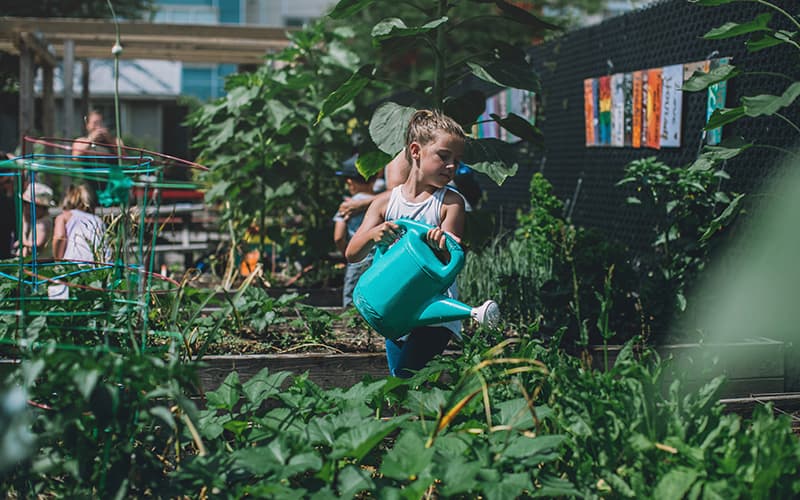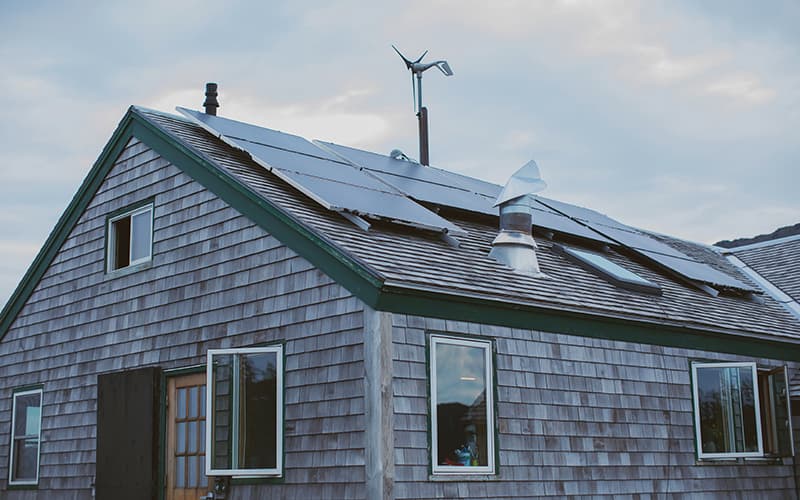Go Green: 10 Tips for a More Sustainable Lifestyle

Measuring a person’s carbon footprint includes a number of factors. Choices we make, from the food we eat, to the products we use and industries we support, to the distances we travel, play into the amount of greenhouse gases we add into the atmosphere. These greenhouse gases, including carbon dioxide, methane, and nitrous oxide, all aid in the warming of the atmosphere, and contribute to the effects of climate change.
“It’s easy to be cynical about the impact our individual actions can have on reducing climate change,” says Dave Publicover, AMC’s senior staff scientist. “After all, all of us support and use the products of power plants and factories (the produce most of the greenhouse gas emissions). But individual actions and choices, when multiplied by millions of households, can collectively have a major impact.”
One action item to add yourself in the fight against climate change is to adopt a sustainable lifestyle and consider how our day to day habits play into that. Here’s 10 ways to get started.
1. Avoid Single-Use Plastics
An easy way to start a more sustainable lifestyle is by avoiding or eliminating single-use plastics. According to EarthDay.org, 335 million metric tons of plastic are produced each year with half of that destined for single use before it ends up in a landfill or the ocean—where it will remain forever, never decomposing. To help curb this, invest in reusable products like water bottles, coffee mugs, beeswax food wraps, canvas shopping bags, and sustainable eating utensils, which help reduce plastic use and saves you money in the long term. For example, by purchasing one reusable water bottle, you could save an average of 1,500 plastic water bottles per year and $3,000.

2. Recycle
Soda cans, paper products, and some plastics are recyclable through your city or town. Be sure to research what your local recycling program is and follow those guidelines when disposing of products. Plastic bags are a tricky category, as they typically aren’t compatible with most recycling programs, but many stores have designated drop off locations. (Better yet, eliminate the use of plastic bags all together by bringing your own bags.) Upcycling, or creating new uses for otherwise unwanted products, is a fun and easy way to reduce your waste. Before tossing, say, your plastic strawberry container from the grocery store, consider other ways to use the product: fill it with soil and plant seeds or use it to separate items in your desk drawers. Consider buying used clothes and gear and donate your unwanted items instead of tossing them in the trash. Have some old T-shirts that even thrift stores don’t want? Cut them up into dish rags to use instead of buying paper towels.
3. Reduce Food Waste
Thirty to 40 percent of the U.S. food supply ends up as waste, and the largest category of items that end up in landfills, according to the U.S. Food & Drug Administration. Not only is that hazardous to the environment (producing methane as it rots in landfills and contributing to climate change), it’s also a lost opportunity to feed those in need. To help reduce food waste as an individual, first try to limit shopping for only what you need. Composting is another effective way to reduce food waste—instead of tossing out your food scraps, build your own compost bin, drop off at a designated collection site, or participate in your city or town’s program (if available).
4. Pay Attention to What You Eat
According to Science magazine, switching to a vegetarian or vegan diet can reduce your carbon footprint by 73 percent and is one of the best ways to fight climate change. Raising farm animals for consumption is one of the lead producers of greenhouse gas emissions—30 percent of the Earth’s land is currently used for livestock, and factories emit exorbitant amounts of greenhouse gasses through energy use and transportation. Livestock farms also produce detrimental amounts of nitrous oxide and methane (the average cow or sheep produces an estimated 250-500 liters of methane per day), which over time can be far more lethal to the environment than carbon dioxide. By switching to a plant-based diet, or even cutting back on the amount of meat you eat each week, can help lower your own personal environmental impact.
It’s also important to consider where your food comes from. The food you purchase in grocery stores can travel hundreds if not thousands of miles before it reaches your home. By shopping local—either at farm stands, farmer’s markets, or a community supported agriculture (CSA) program— you’re helping to lower carbon emissions from transporting those foods, as well as from non-sustainable agricultural practices, and lessen your own carbon footprint. Plus, you’re supporting your local community. When you’re at your local grocery store, do some research ahead of time to find products that participate in sustainable practices. Organic foods are usually free of pesticides and other harmful chemicals, and look for shade grown or bird-friendly coffee brands to help bird habitats. And if you have the space, start your own garden and plant a variety of foods and flowers to stimulate a healthy ecosystem in your backyard.

5. Conserve Energy in Your Home
Reducing your electricity use at home not only lowers your carbon emissions, it also saves you money.
“A study by a PBS research team found that “over 20 percent of all U.S. emissions are directly attributed to household consumption. If you consider indirect emissions (like producing the energy or manufacturing a vehicle), this figure is closer to 80 percent,” Publicover says. “Our choices and activities determine which economic and social activities are rewarded and which are punished.”
At AMC, the organization prioritizes renewable energy and zero waste at many of its destinations. At home, start by identifying ways in your home to reduce energy use with a DIY Energy Audit. Then, set some manageable goals for yourself, like reducing your energy by 10 percent over the course of a year. Most states allow you to choose your energy source, so contact your energy provider for more information on how to use renewable energy sources for your home. Other ways to save energy include turning lights off when you aren’t in the room, unplugging electronics when not in use, or hanging your laundry to dry in warmer months instead of using a drier.
6. Conserve Water
Only 3 percent of the Earth’s water is freshwater, and less than 1 percent is safe for drinking, according to the U.S. Bureau of Reclamation. Conserving this natural resource is essential not only for the health of humans, animals, and plants, but it’s also beneficial for the environment reducing water usage saves energy and reduces greenhouse gas emissions needed to clean that water. Easy ways to conserve water at home include turning off the faucet while brushing your teeth or washing dishes, taking shorter showers, and watering your garden with a watering can instead of a hose.

7. Offset Your Carbon Emissions
Traveling is always fun, but before you go consider how your plans affect the environment. If you’re heading out to the trails with friends, try to carpool if possible, and choose destinations close to home. You can also look into investing into carbon credit programs, which offset your emissions by purchasing credits from participating organizations. While these credits don’t stop your contributions to emitting greenhouse gasses into the atmosphere when you travel, it at least helps you support sustainable practices in other parts of the country, such as AMC’s Maine Woods.
8. Invest in Sustainable Cleaning and Beauty Products
Certain chemicals found in household cleaning products or skincare items can pose threats to the environment. According to the EPA, certain chemicals in cleaning products may be detrimental to aquatic habitats, like alkylphenol ethoxylates, which in some studies has affected the reproduction of wildlife. While the EPA says that most effects are caused by high dosages of hazardous chemicals, the best way eliminate these chemicals in the environment is by avoiding using them at all. Instead, opt for environmentally friendly or plant-based cleaning products, bath soaps, and laundry detergent, or make your own.

9. Practice Sustainability Outdoors
When heading outside, remember to bring your sustainable lifestyle with you. Practice Leave No Trace, maybe even taking it a step further by picking up and disposing of any trash you find on your journey. Try to purchase environmentally friendly bug sprays and sunscreen, and be sure to recycle your fuel canisters after a weekend of camping. Looking for ways to give back? Organize or volunteer for a local trail cleanup event or download iNaturalist to participate in citizen science programs in your area.
10. Support Environmental Causes, Sustainable Businesses, and Vote
Environmental change starts at the individual, but if you want to support big changes in environmental policy and conservation, be sure to do so by voting for candidates that align with your environmental causes, voicing your concerns to your elected officials on certain issues, and supporting conservation organizations either financially or by volunteering. “Certainly major new governmental policies at all levels are needed, which is why voting for candidates who make addressing climate change a priority is one of the most important things you can do,” Publicover adds. Also be sure to do your research before buying clothing, gear, or other adventure products to assure they are committed to sustainability.




